Hitting that temperature sweet spot when you’re cooking meat or fish is essential for the quality of the final product.
Therefore, to make the juiciest smoked salmon you should first find its best internal temp.
Even though smoked salmon can be considered done at few different temperatures, the USDA recommends cooking it to at least 145°F.
Lower temperatures, while still accepted by some, put you at risk of a bacterial infection.
In this guide, I’ll take a look at the various internal temperatures for smoked salmon as well as how long it should be cooked.
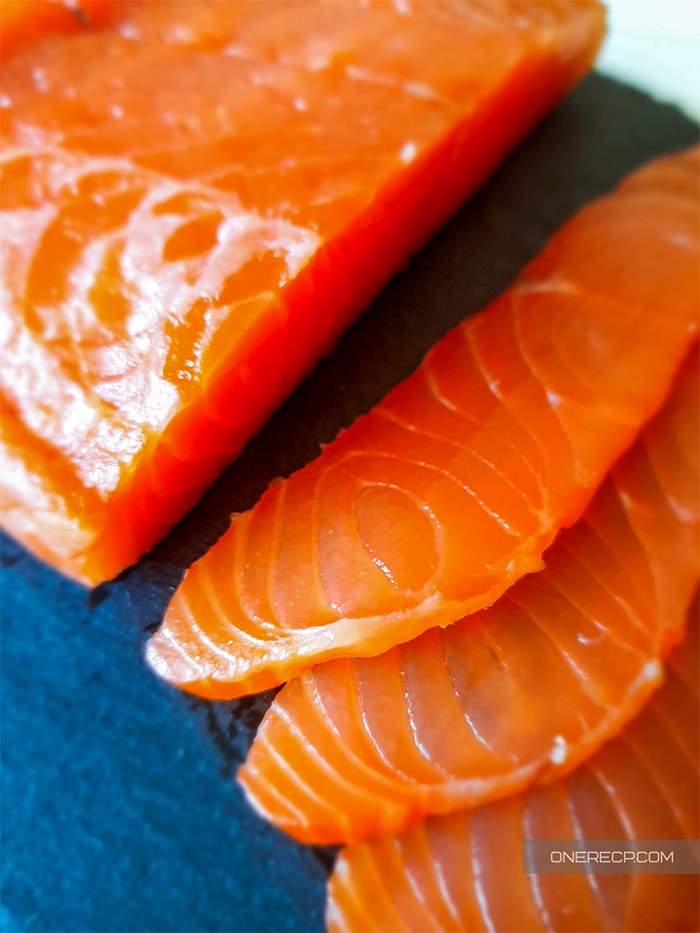
Smoked salmon internal temperature guide
Eating raw or undercooked salmon puts you at a risk of several foodborne illnesses such as Vibriosis, Salmonella, and Botulism.
These illnesses can have lethal effects on pregnant women, people with a compromised immune system, and the elderly.
This is why it’s crucially important to always make sure your salmon has reached the proper internal temperature before taking it out of the smoker.
Here’s what the internal temperature for smoked salmon is when done:
In order to be safe for consumption, salmon should be smoked to an internal temperature of 145°F(63°C). This will destroy any harmful bacteria such as Vibrio or Salmonella.
To measure the internal temperature of smoked salmon, insert a food thermometer at the thickest part of the filet.
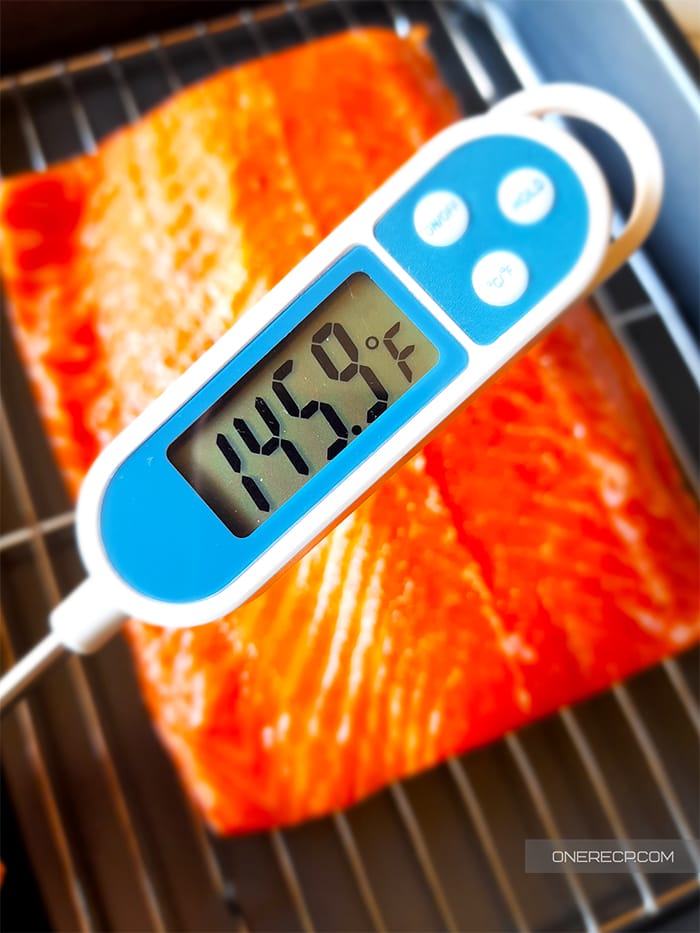
Of course, you can also cook it to a higher temperature, but this will significantly alter its texture.
Smoking salmon to higher internal temperatures, dries out the meat and makes it more chewy. I personally wouldn’t go above the temp recommended by the USDA, since this gives it a jerky-like texture.
Having said that, many people in the smoking community, myself included, tend to slightly disagree with USDA’s guidelines.
And the reason being is quite simple.
But before I get to it, we’ll take a look at what the pellicle is and why it’s so important in smoked salmon.
Suggested Next: Best Internal Temperature for Cooked Lobster
What’s the pellicle and why is it so important in curing?
Most dry cures you’ll find on the internet consist of nothing more than two key ingredients – salt and sugar.
Salt is used to remove the excess moisture from the top layer of the fish, while sugar serves as an antimicrobial agent that helps with preservation.
When both of these agents get rubbed onto the fish, they create a thin coating of water soluble proteins called a pellicle.
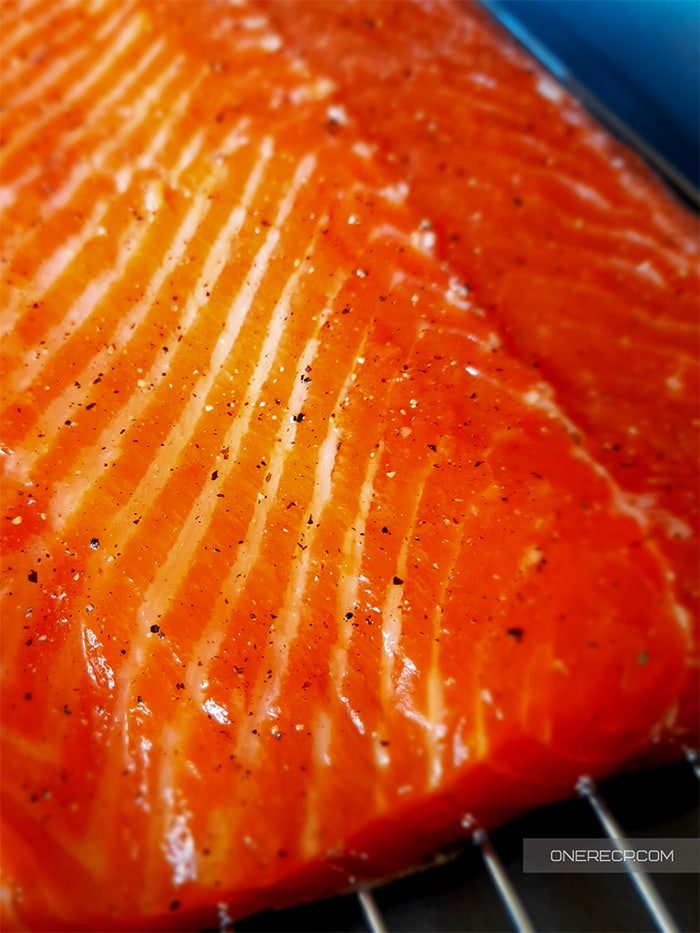
The pellicle serves as a protective layer that helps the inside of the fish stay moist and captures the smoke during cooking.
However, when the internal cooking temperature of salmon reaches 140°F this layer starts to break down and the fat from the inside of the fish begins to ooze out. As you can probably imagine, this dries the salmon and makes it less succulent.
This is why I remove my fish from the smoker once it reaches 140°F.
And even though it may seem like a trivial difference, five degrees do play a noticeable role in the texture of the final product.
I’ve also read reports of people smoking theirs to 130°F, but I haven’t tried this out myself so I can’t personally attest to the quality of the meat.
According to these reports, the texture of the fish at this temperature strikes the perfect balance between tender and firm.
Bear in mind, that if you’re going to smoke your salmon to a temp lower than 145°F, you’ll be doing so at your own risk.
If you want to be on the safe side, simply stick to USDA’s guidelines.
Author’s note: You should always pat dry salmon with a paper towel after curing. This will remove the excess moisture and aid the formation of the pellicle.
How long should you smoke salmon?
If you’ve browsed through your fair share of smoked salmon recipes, then you’ve probably stumbled on a number of different smoking temperatures and times.
And even though this can be quite confusing, the only distinction you should be able to make is whether to hot smoke or cold smoke.
Cold smoked salmon is prepared at a temperature lower than 80°F so it requires significantly more time to fully cook.
It typically takes anywhere from 18 to 24 hours depending on the thickness of the filet and the type of smoker that’s used.
It should be noted that cold smoking doesn’t actually cook salmon all the way through. This increases the risk of a bacterial infection if the salmon isn’t handled properly. Having said that, the things with hot smoked salmon aren’t quite the same.
Hot smoking is a technique that’s used to cook salmon at a temperature range between 150°F to 225°F.
Unlike cold smoking, it cooks the fish all the way through and it takes notably less time.
Unfortunately, there aren’t any clear guidelines on the exact time it would take you to fully hot smoke a piece of salmon.
There are a number of factors that can affect cooking time such as the thickness of the filet, your smoker and the type of fuel.
With that said, you can use the following salmon smoke times as a rough estimate:
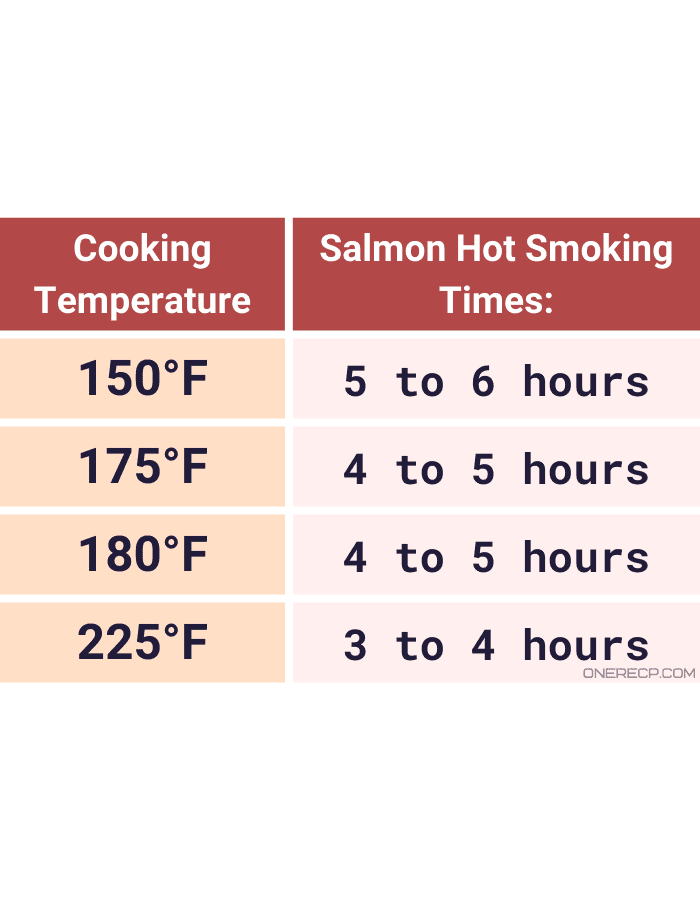
The best temperature to smoke salmon is 225°F since it takes the least amount of time and there isn’t much of a difference when it comes to texture.
Related: How Long Should You Smoke Pork Butt at 225°F for Juiciness?
What type of wood should you use to smoke salmon?
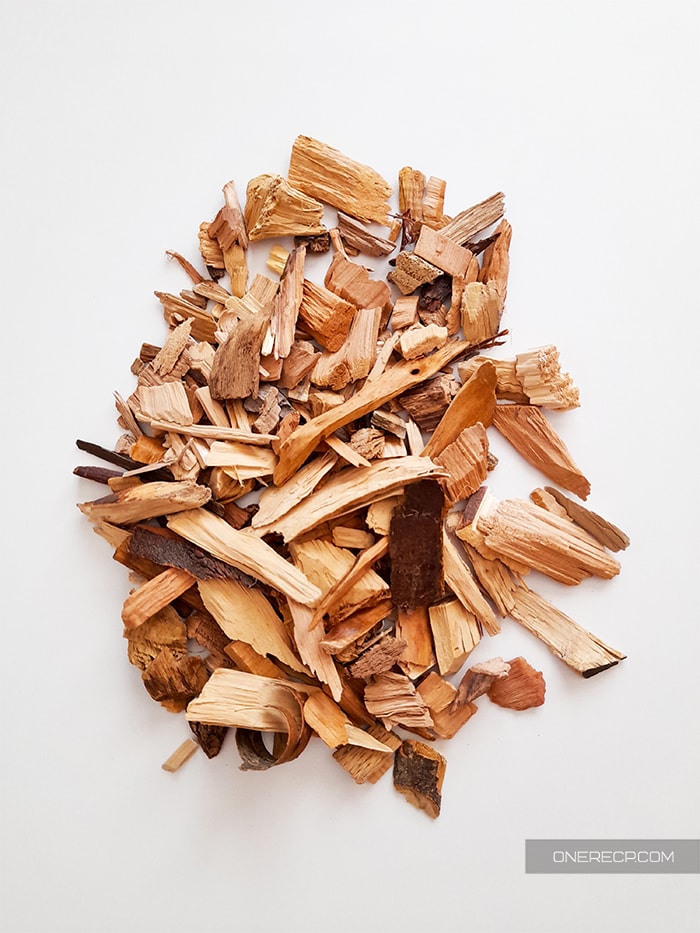
There are a few types of wood that pair really well with the delicate texture and flavor of salmon.
If you’re new to smoking, then you might want to start out with alder wood.
Alder has mild smokiness and adds a subtle flavor that doesn’t overpower the natural taste of the salmon.
It also produces a slow burn which is perfect if you’re going to smoke at lower temperatures.
Oak is generally considered a jack of all trades when it comes to smoking meat so you can’t go wrong with it.
Maple is another great type of wood for smoking fish like salmon.
Even though it’s mostly used for pork and chicken, maple wood can enhance the natural taste of fish by adding a hint of sweetness.
And since it has mild smokiness, the flavors it imparts don’t overpower those of the salmon.
Maybe Read Next: How Long Should You Bake Pork Chops in the Oven at 350
If you’re striving for a stronger taste, then cherry wood is a better option.
It produces a slightly stronger smoke than maple and gives foods a slightly richer taste.
I’m more of a purist myself, so I most often use alder wood.
Nevertheless, I’ll be glad to hear what your favorite type of wood for smoked fish is down in the comments.
It’s also worth pointing out that for best results you should use wood pellets instead of wood chips.
Pellets provide a slow, steady burn that produces an even smoke.
Wood chips on the other hand aren’t as reliable when it comes to the consistency of the smoke.
Best ways to serve smoked salmon
Smoked salmon can be used in a variety of dishes, from simple salmon crackers and tiny cocktail bites all the way to incorporating it into pasta sauces.
I personally love serving smoked salmon by topping it with a layer of cream cheese, adding some cappers and black pepper on top, and then rolling it around a piece of cucumber.
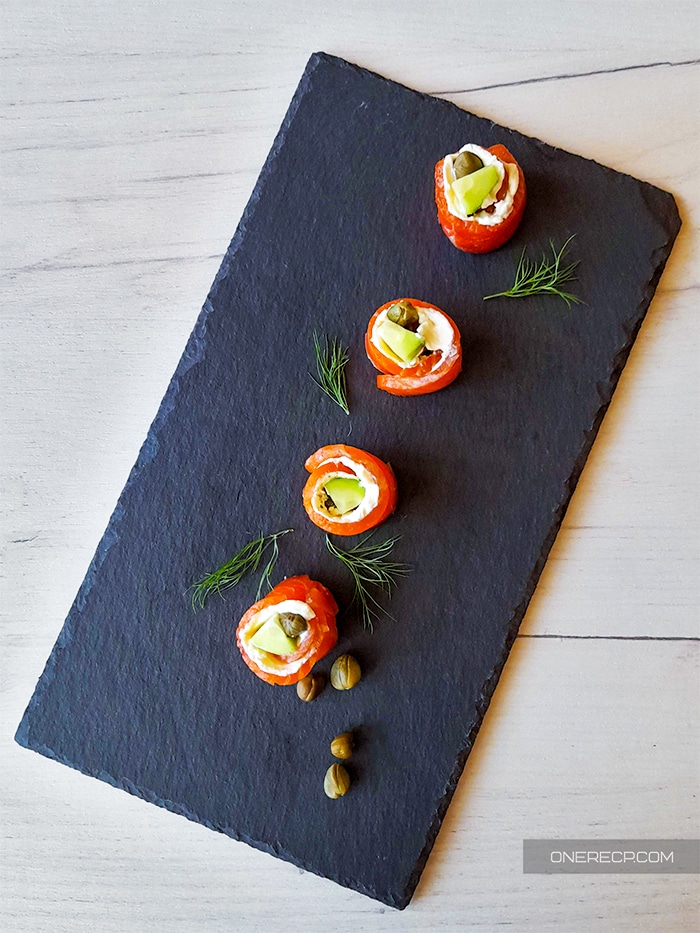
It’s a super refreshing snack that’s perfect for sultry days and also serves as a great smoked salmon appetizer.
Another way I like to enjoy my smoked salmon is by layering it between slices of mozzarella and tomatoes.
The salty, pungent flavor of the salmon blends simply perfectly with the freshness of the mozzarella cheese.
And let’s not forget the classic cream, cheese bagels topped off with smoked salmon.
Just thinking about them makes my mouth watery! In case you have any leftovers I recommend checking my list of recipe ideas for leftover smoked salmon!
Related: Recipe Ideas for a Salmon Dinner Party
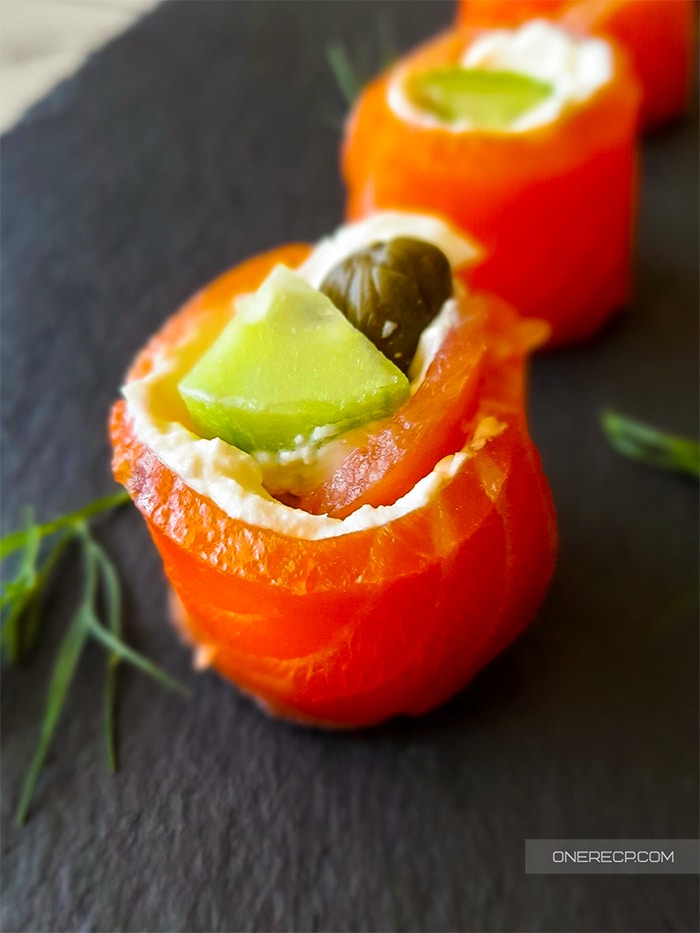
My Conclusion
Smoking salmon is probably one of the easiest cooking feats you can achieve.
It requires nothing more than a few simple spices and patience.
And now that you know what’s the best internal temperature for smoked salmon you’ll be able to ace it every single time.
Don’t forget to post a comment if you found this guide helpful.
For your next seafood dinner you can try some of my other recipes:
- A quick seafood salad recipe idea: Easy Imitation Crab Salad With Sweet Corn and Mayo
- Whole sea bream recipe: Oven Roasted Sea Bream With Lovage (Tsipoura)
- Whole Branzino recipe (Mediterranean sea bass): Oven Roasted Whole Branzino